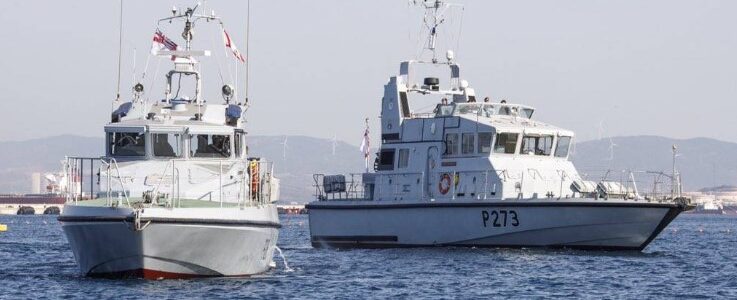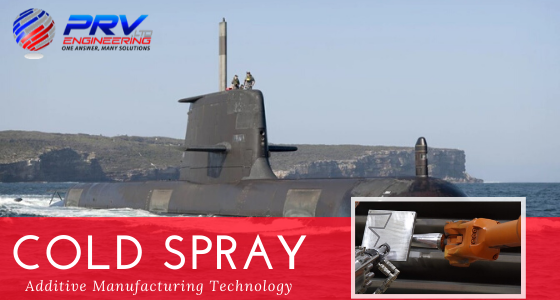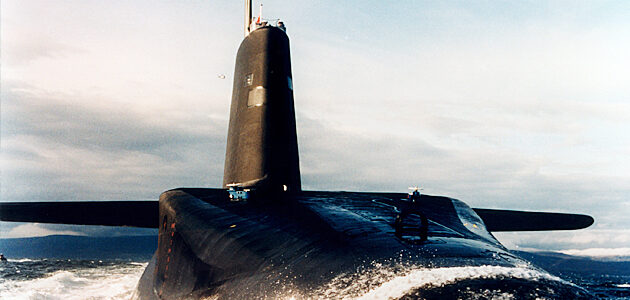Image Credit: UK Royal Navy
The Royal Navy is set to receive two new patrol boats from UK based boat builder, Marine Specialised Technology (MST). They were awarded a £9.9-million ($12.9 million) contract to build the new boats which will replace the Royal Navy Gibraltar Squadron fast patrol craft.
According to Marine Specialised Technology (MST), construction started last month (July 2020) and they will provide four years of local in-service support. The first vessel is due in late 2021 and the second will be ready in the first quarter of 2022.
In this rare behind-the-scenes look, you will see some of the incredible developments within the UK defence industry. You will find out all you need to about inflatable sea boats, radar systems, microelectronics, missiles and Environmental Stress Screening. Before we get started, let’s take a closer look at BAE Systems and MBDA.
Image Credit: BAE Systems
Over the years advances in technology and engineering have accounted for many innovations within the defence sector. Last week we looked at naval vessels and today, we focus on the Challenger 2 MK2 Black Night Battle Tanks.
The original Challenger 2 served with distinction in Bosnia, Kosovo and Iraq and now, the Ministry of Defence (MoD) has extended its service to 2035. BAE Systems have introduced the first working prototype of the Black Night upgrade to the UK’s main battle tank, Challenger 2. It features a state-of-the-art thermal imaging system and many improved defensive systems capable of challenging anything standing in its way.
Image Credit: Austel
When we look at modern naval vessels, the larger and more glamorous ships generally take centre stage including the massive aircraft carriers and the ever-dangerous nuclear submarines. However, if it weren’t for frigates, these super ships would be unable to safely take on the open oceans.
Frigates are also called the “eyes of the fleet” and serve as multi-purposed warships. Their size is essentially in-between a smaller corvette and a larger destroyer where they act independently of the fleet and can free up larger ships in medium-threat areas.
While frigates weren’t suitable to fight with the rest of the fleet in normal battles, they were the perfect solution to long-range solo missions. This included exploration, patrols, escorts, blockades, anti-piracy and anti-slavery missions among others.
Image Credit: Rolls-Royce
The UK Government, with Defence Secretary Gavin Williamson, has awarded Rolls-Royce Submarines with a £235m contract to support nuclear propulsion systems for the Royal Navy’s nuclear-powered submarines. They have also revealed the name of the third Dreadnought submarine that will add to their already powerful naval defence. It is called HMS Warspite in memory of the last ‘great ship’ built during the reign of Queen Elizabeth I.
As the contract stipulates, Rolls-Royce will deliver the required support, advice and materials to ensure the safety of the propulsion systems. The multi-million-pound deal relates to the current Trafalgar, Vanguard and Astute class submarine fleet until 2022. The contract will also help sustain approximately 500 jobs in the UK mainly in Derby, HMNB Clyde and HMNB Devonport.
Image Credit: Boeing
Back in 2017 we reported on the Boeing Echo Voyager autonomous unmanned submarines and now, big brother is here. It comes in the form of the Orca Extra Large Unmanned Undersea Vehicles (XLUUVs) built for a host of applications.
The US Navy awarded Boeing with a US$43 million contract to build four Orca’s and the support gear. Boeing partnered with Huntington Ingalls Industries to develop the 51-ft (15.5 m) long unmanned undersea vehicles which will operate in the open ocean. This is largely thanks to next-level autonomous navigation systems and a fuel module that gives the Orca an incredible range of 6,500 nm (7,480 mi / 12,038 km).
But to get a real idea of the engineering ingenuity of the Orca, let’s recap on the Boeing Echo Voyager.











Recent Comments